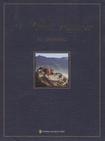西藏读本
出版时间:2009-9 出版社:外文出版社 作者:苏叔阳 页数:197
内容概要
This book is not meant to be a general history of Tibet, nor a Tibetan adventureor folklore monograph. It focuses on the attempts being made today to solve the riddles and confusion surrounding Tibet, including contemplations, reflections, in-depth discussions, and plain narrations in a language of honesty and sincerity. It also expresses a feeling of fraternity towards Tibetan compatriots and a longing for a beautiful tomorrow for Tibet. Careful readers may be inspired and moved by its content.
作者简介
Su Shuyang(1938-),An honorary member of China Writers'Association National Committee. A consultant to China Filmmakers'Association and a national level-one screenwriter. Amember of the board of directors of Renmin University of China,His works include novels,for example,the Native Land and The Death of Lao she,as wel as screenplays,the song of Loyal Hearts and The Neighbors,His China Reader has been rendered into a dozen foreign languages,including English,German and Russian,with domestic and international distribution exceeding ten million copies. He was selected as an outstanding film artist for the 100th anniversary of CChina's movies in 2005. He has been awarded the title"National Dramatic Artist with Outstanding Contributions."
书籍目录
PrefaceStories fromThe Marriage ofSongtsen Gampo and Princess WenchengThe Journey of Monk Xuanzang and Introduction of BuddhismWhirlwind of the Islamic WarriorsFolktales and MythsThe Creation of the WorldWhere Did I Come From ?Today's Answers to How Mankind OriginatedLost Glory, the Tubo KingdomAncient Names, Tubo and TibetMyths of the YarlungValleySongtsen Gampo and His ChildrenTibetan BuddhismThe Turbulent History of Tibetan BuddhismMajor SectsDalai and Panchen LamasLies and PlunderThe British Empire's First Attempt on TibetBritain's "Civilizing Operation" im TibetThe Simla Conference and the Mirage of"Independent Tibet"Artistic GloriesTibetan Literature--EpicofKingGesarPainting-- ThangkaTibetan Song, Dance, and OperaPast, Present ao.d FutureThe Dark Past: A Society of Theocratic Feudal SerfdomToday: Rapid Changes and ProgressA Dazzling FuturePostscriptBibliography Main Sources of Photographs
章节摘录
The world that human ancestors knew was a place bounded by how far theireyes could see and their feet would take them. The world beyond was the realmof imagination or emptiness. In Tibetan, "srid pa" means world or universe.Originally, Chinese had no equivalent term for what we understand today as"world." "Yu-zhou (universe)" covered everything. In Cihai (The Dictionary ofWords and Phrases), "yu-zhou" is defined as a collective term for everything inthe universe, including heaven and earth, as well as everything in or on them.Q.suxun (Placing Customs on a Par) of Huainanzi (Philosophers of Huainan,a philosophy classic from the Han Dynasty that blends Taoist, Confucian andLegalist concepts) says: "What has passed and is coming is yu, and what isbeneath and above is zhou." In contemporary language this translates as: Theuniverse is a material world that exists beyond human will it keeps in motionand develops eternally without a temporal starting and ending point and withno spatial boundaries and ends. The universe is an integral entity of diversity It was not until Buddhism came to the Central Plains that the concept of "shi-jie(world)" started to emerge. Buddhism teaches: "The past, present and future arecalled shi; the four directions of east, south, west and north are called jie." Theabove two definitions have the same connotation, both referring to infinite timeand space. But they differ when it comes to how the world was formed.Tibetan people see the world as concrete as the snowy mountains and plateau,as well as the forests and grasslands that cloak them. But where did they comefroml How did they come into being?
图书封面
评论、评分、阅读与下载
